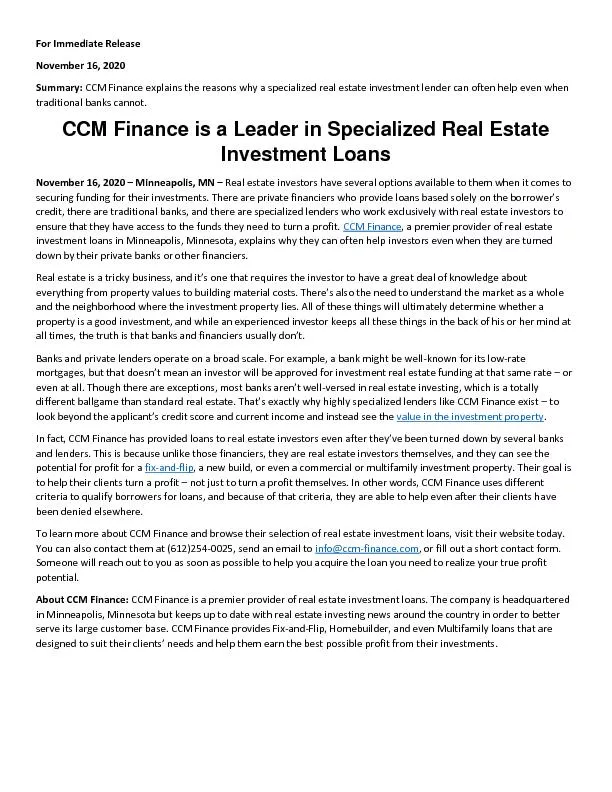PPT-Commercial real estate and nonlocal investors: price dispar
Author : phoebe-click | Published Date : 2016-06-11
Yu Liu Georgia State University Paul Gallimore University of Reading Jonathan A Wiley Georgia State University Primary question Do nonlocal investors pay more
Presentation Embed Code
Download Presentation
Download Presentation The PPT/PDF document "Commercial real estate and nonlocal inve..." is the property of its rightful owner. Permission is granted to download and print the materials on this website for personal, non-commercial use only, and to display it on your personal computer provided you do not modify the materials and that you retain all copyright notices contained in the materials. By downloading content from our website, you accept the terms of this agreement.
Commercial real estate and nonlocal investors: price dispar: Transcript
Download Rules Of Document
"Commercial real estate and nonlocal investors: price dispar"The content belongs to its owner. You may download and print it for personal use, without modification, and keep all copyright notices. By downloading, you agree to these terms.
Related Documents














